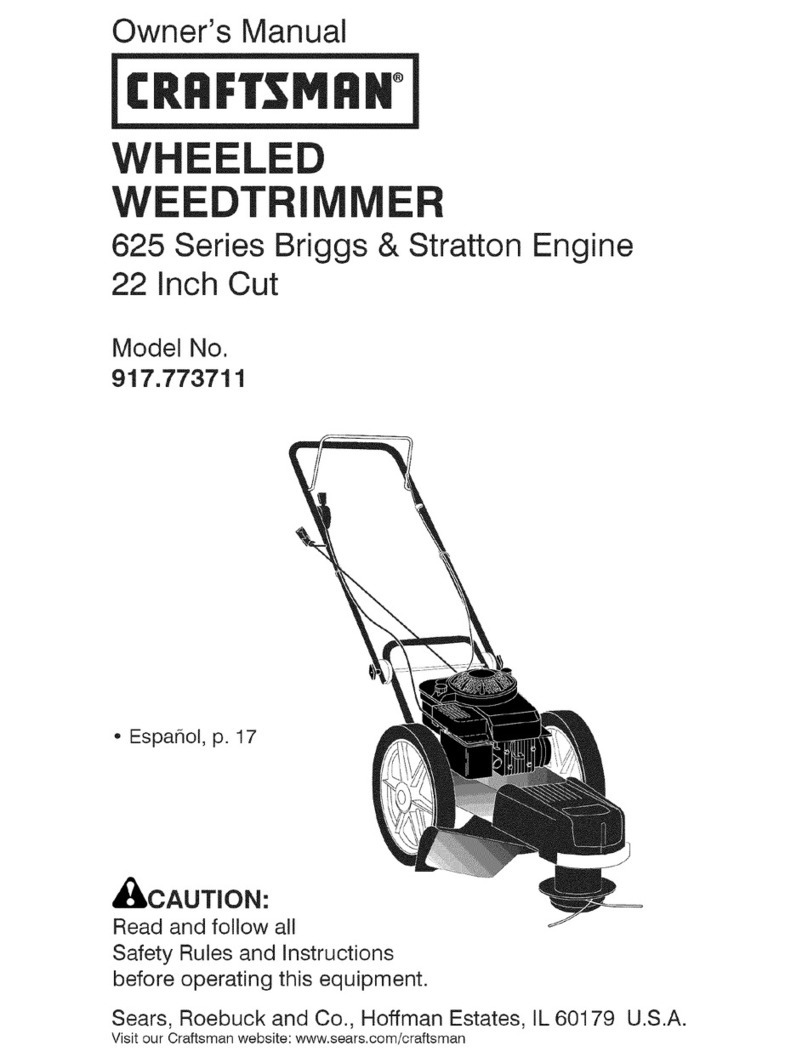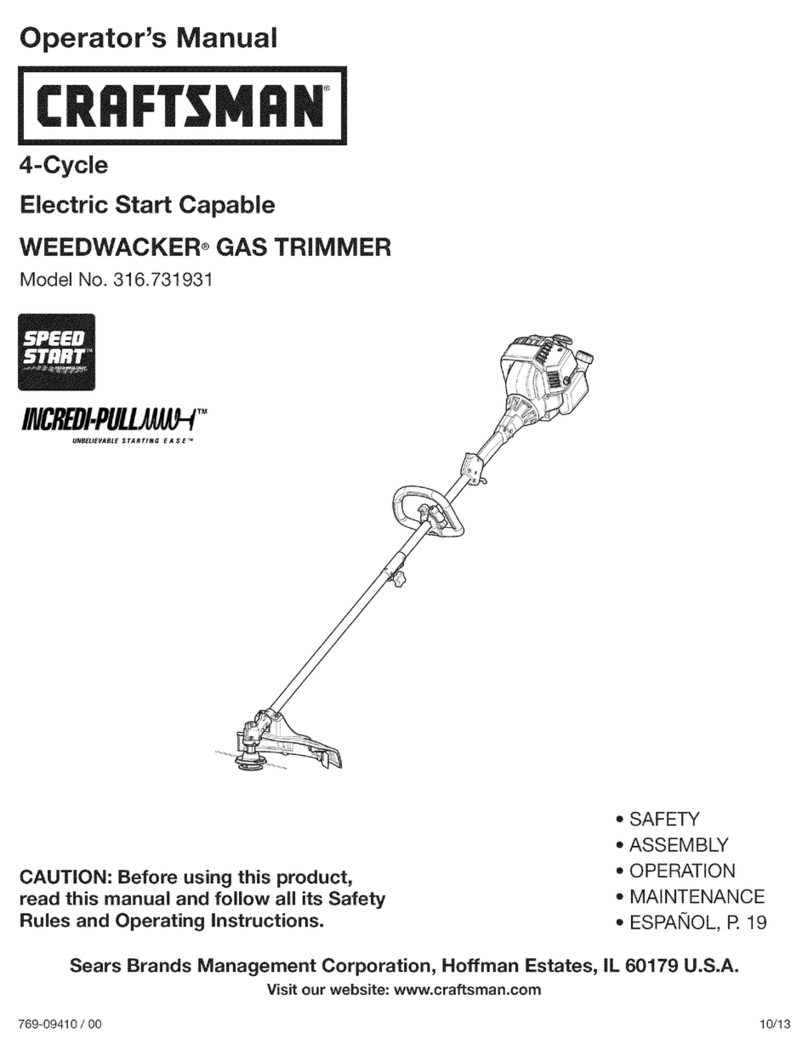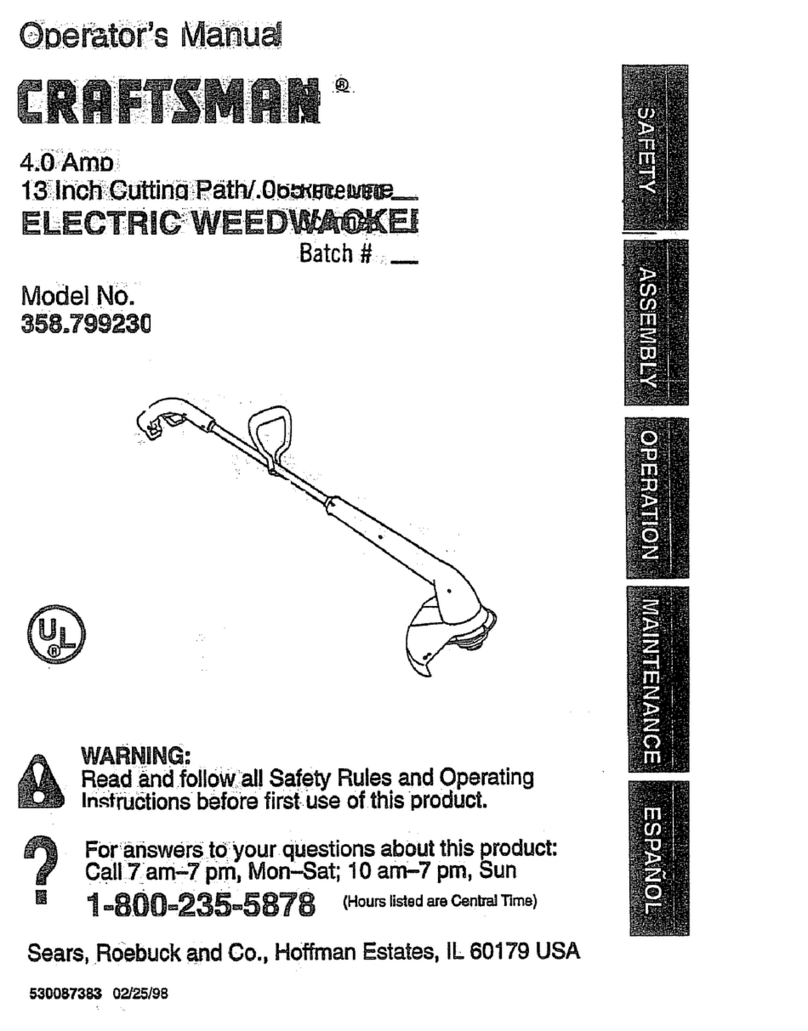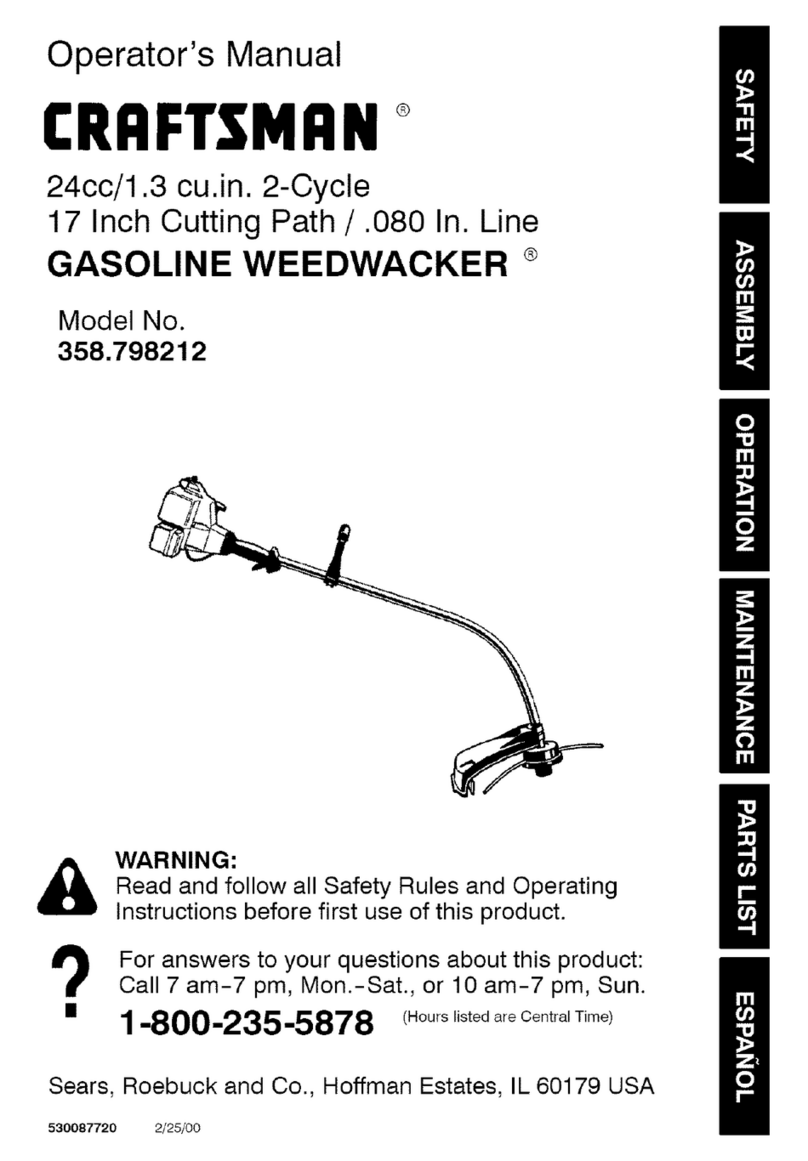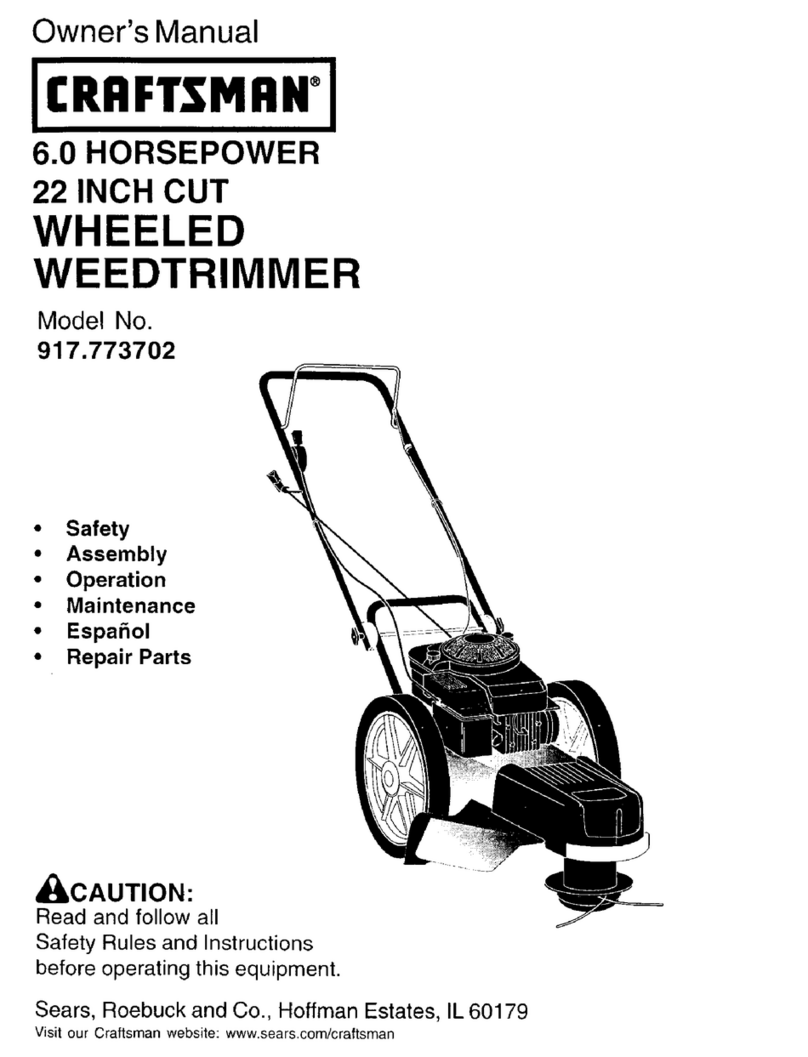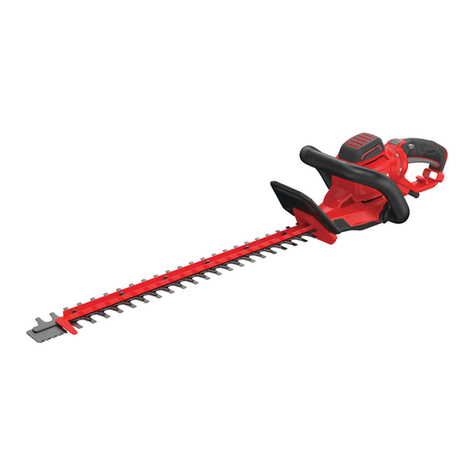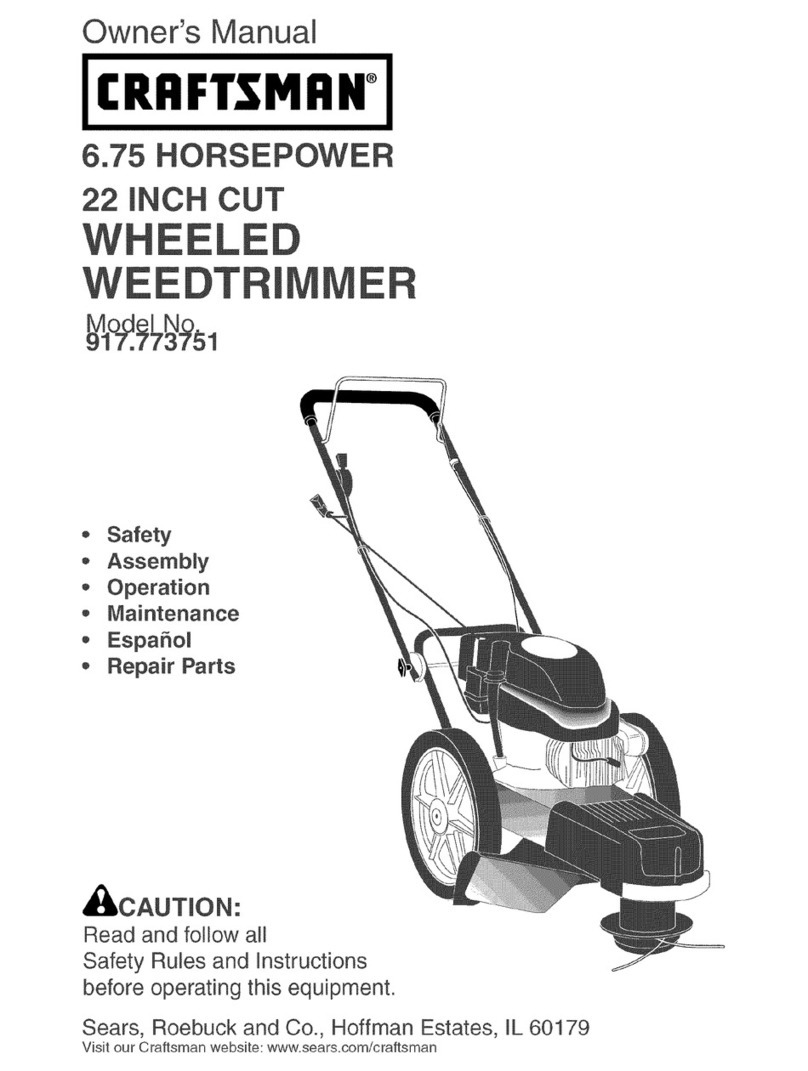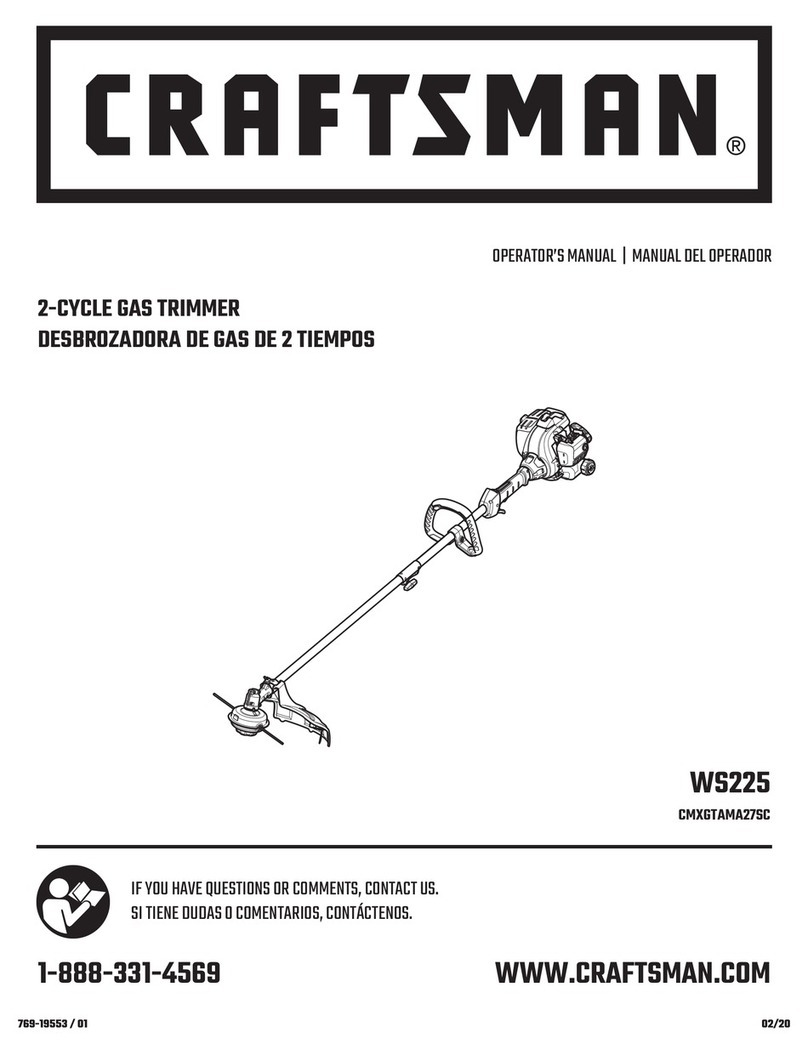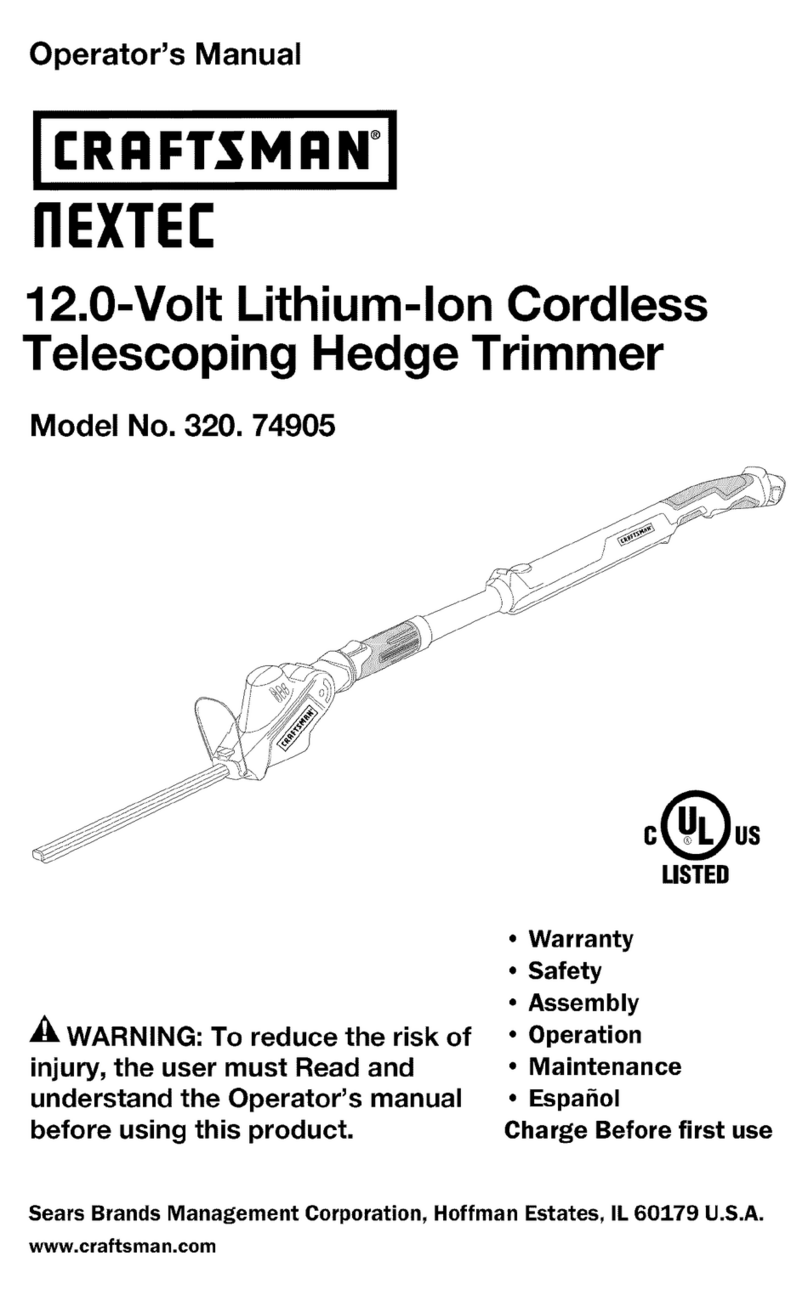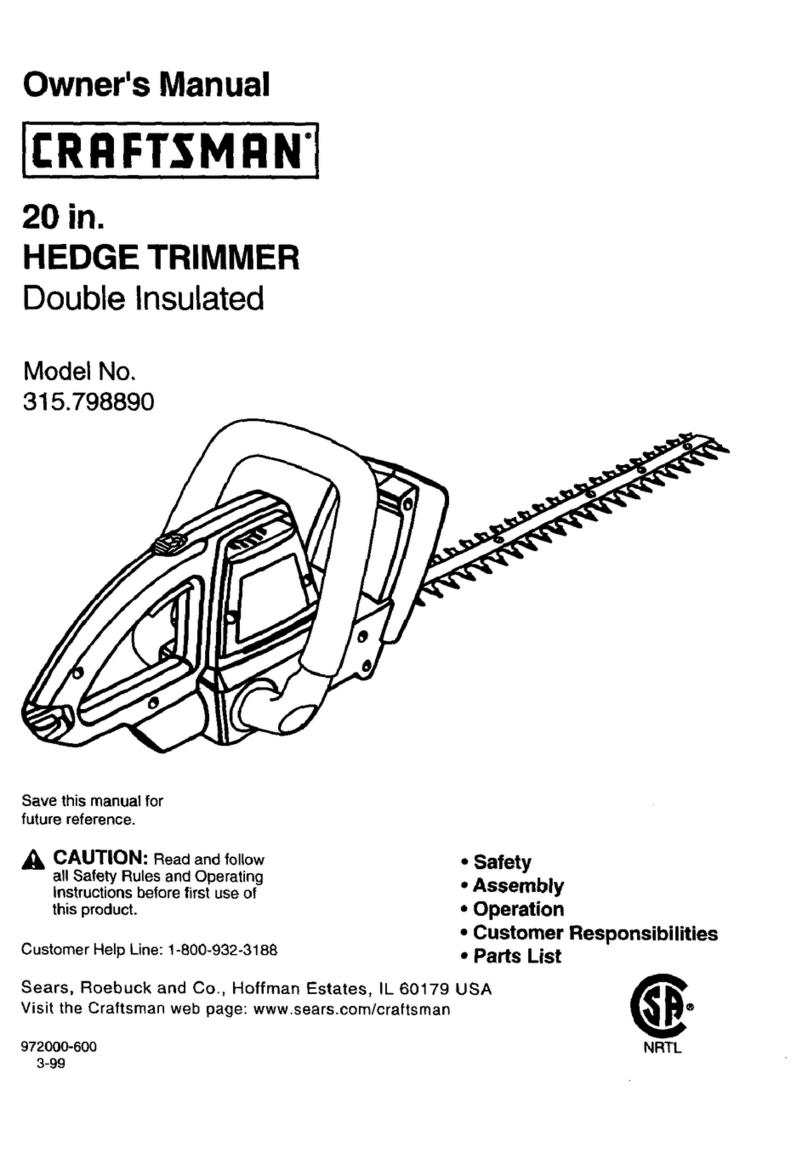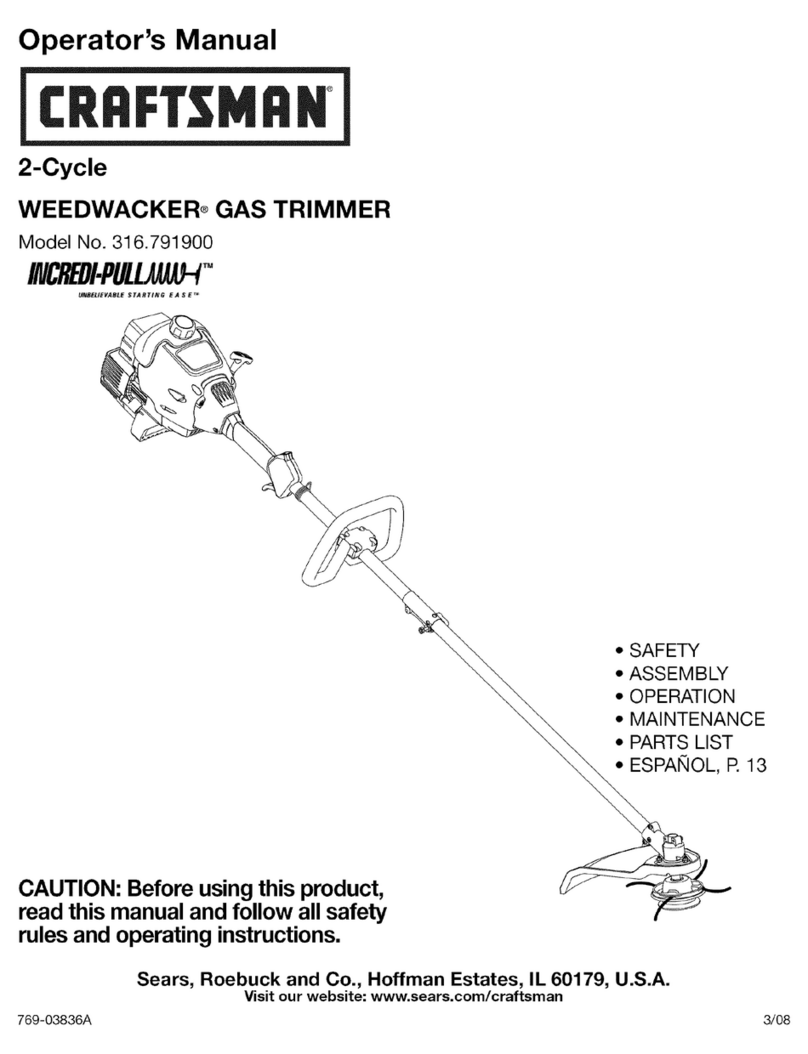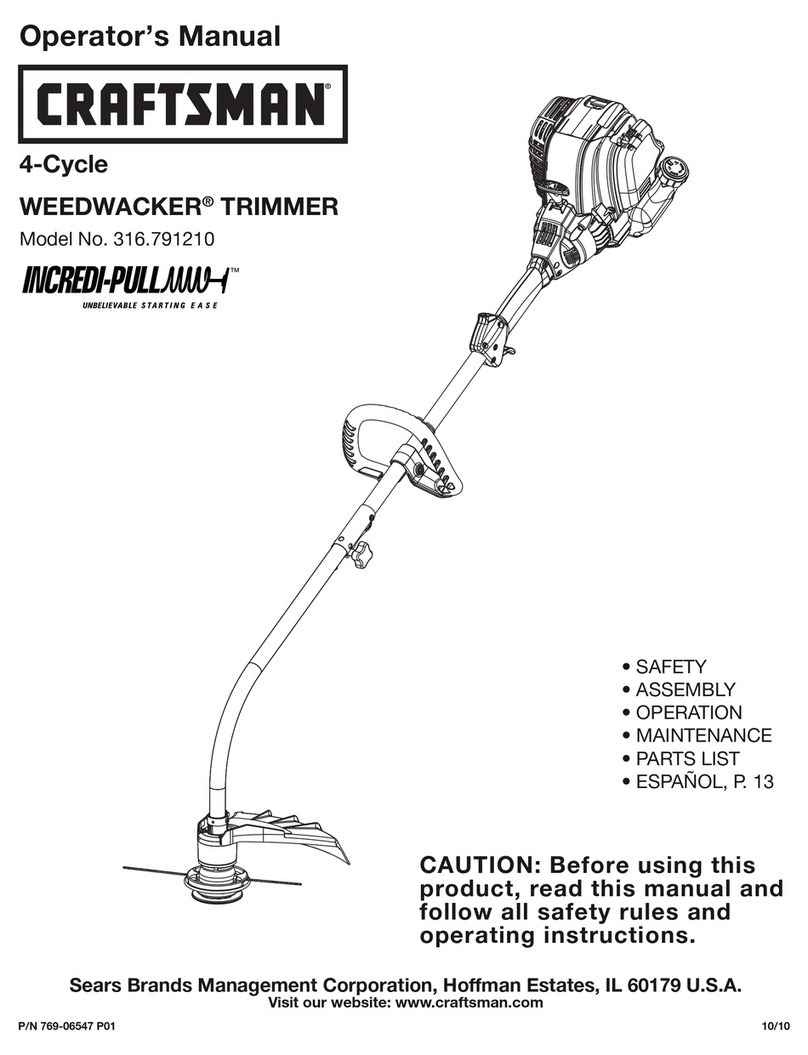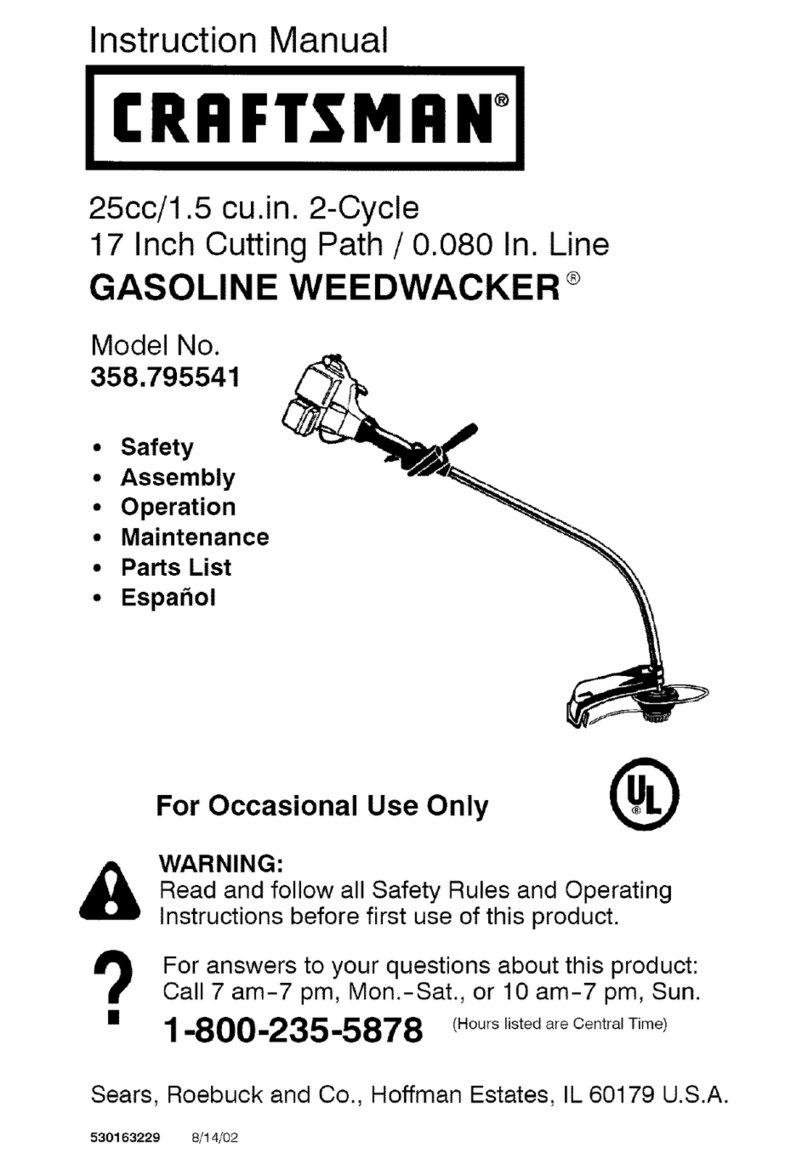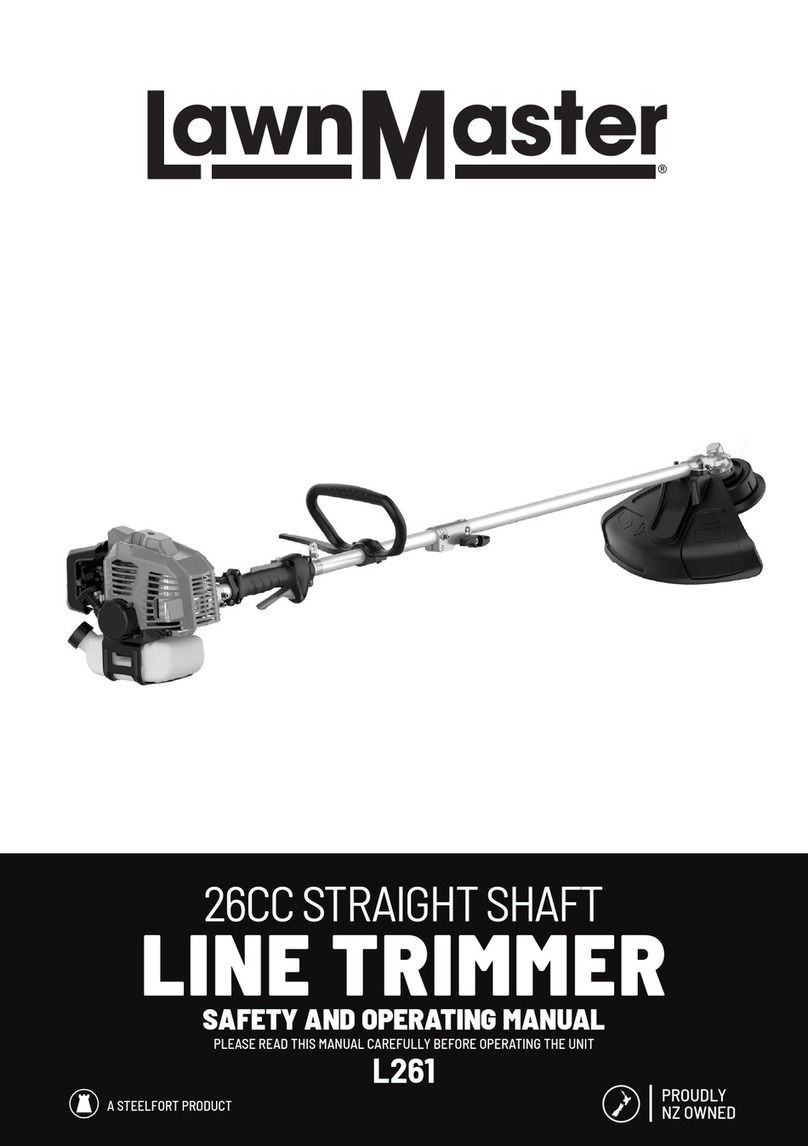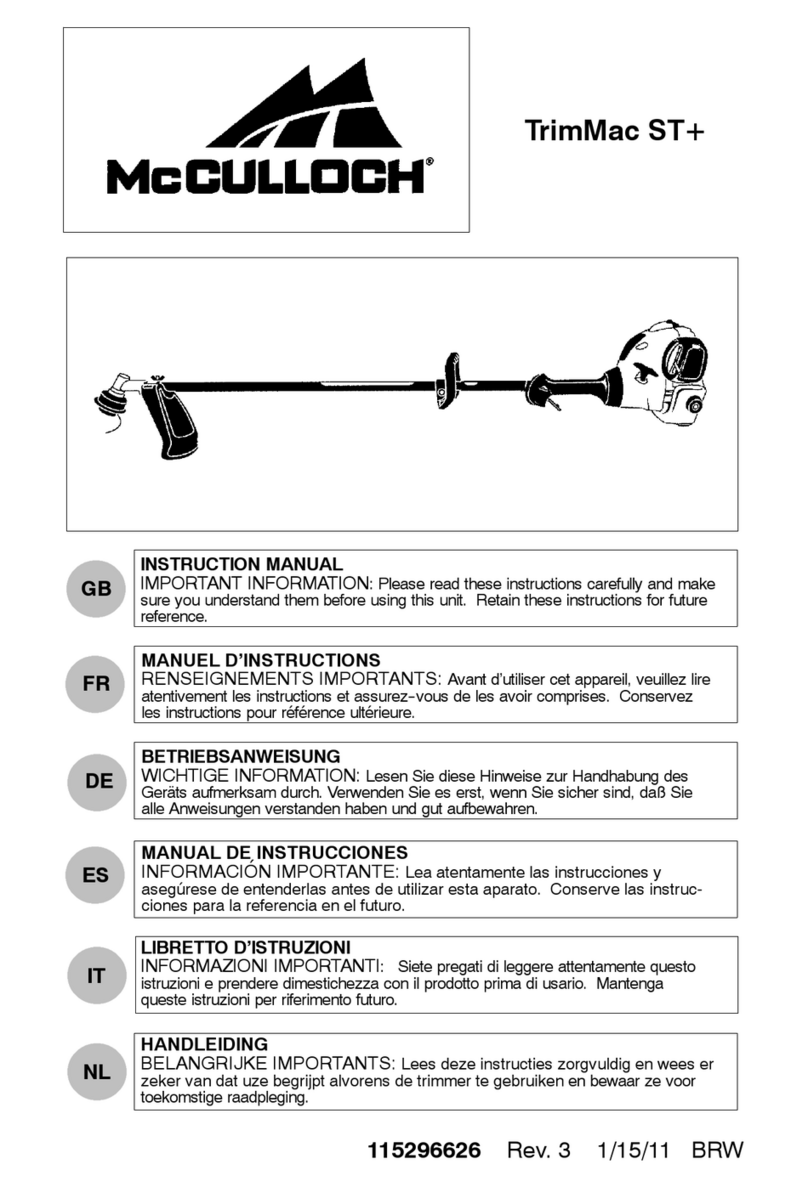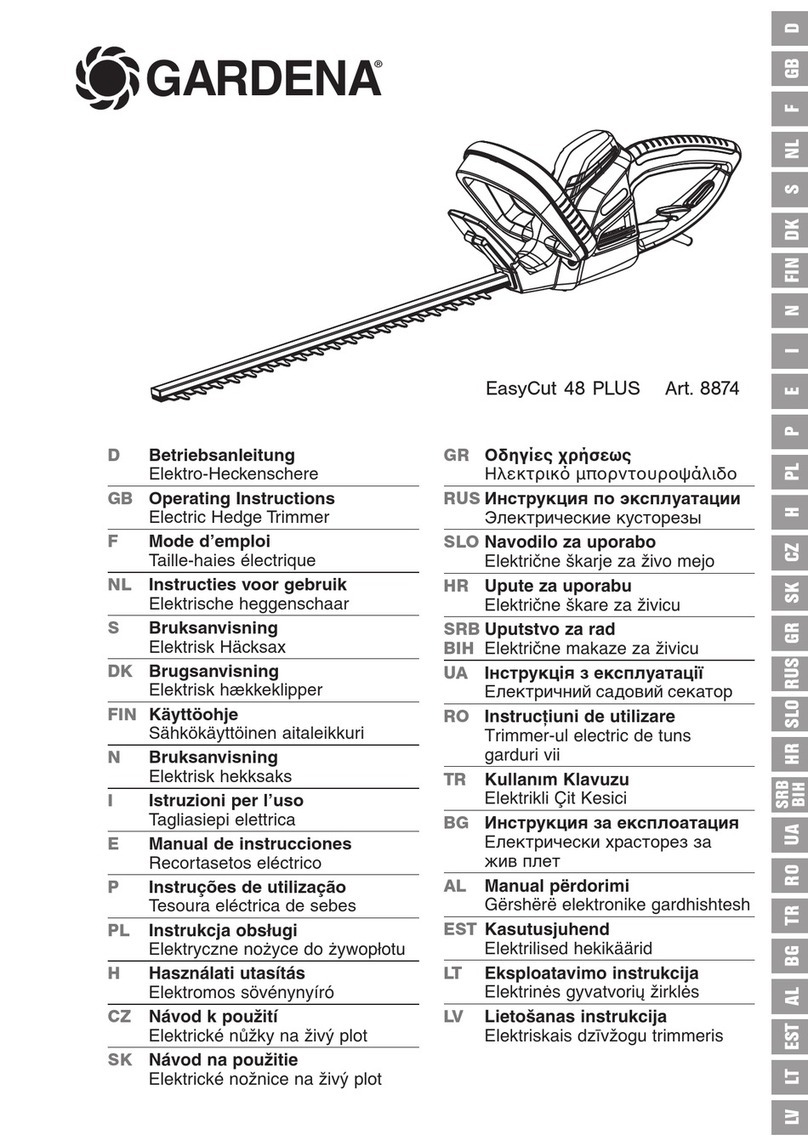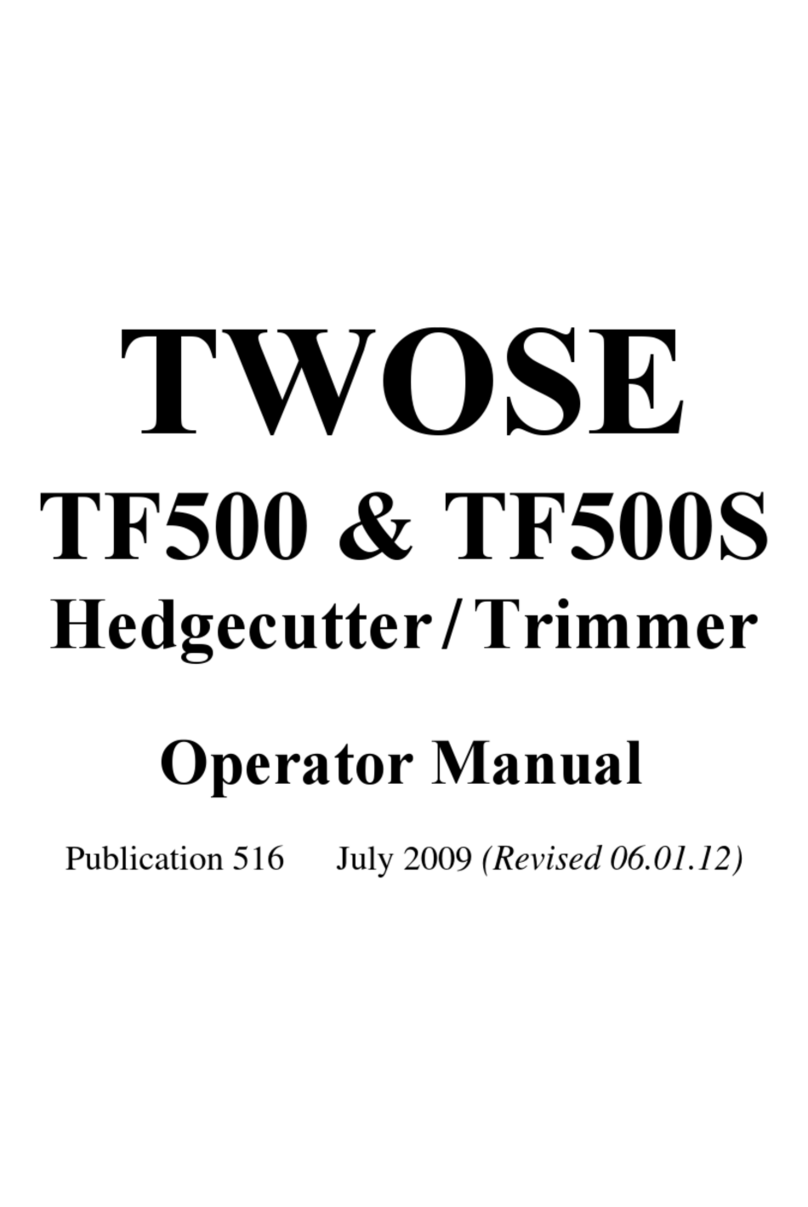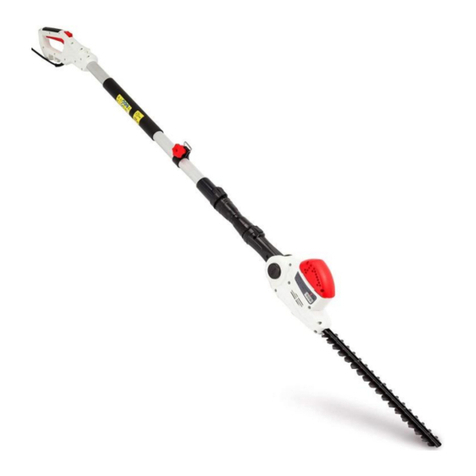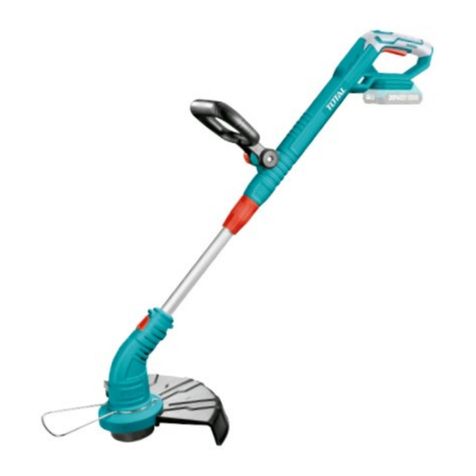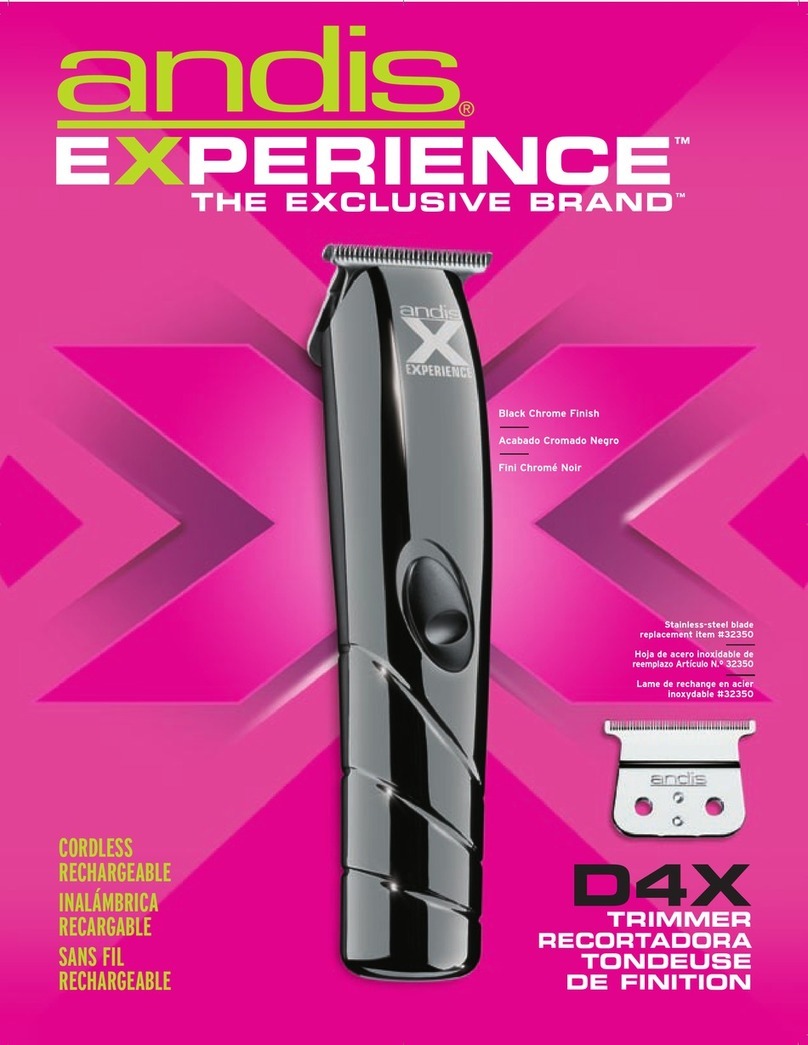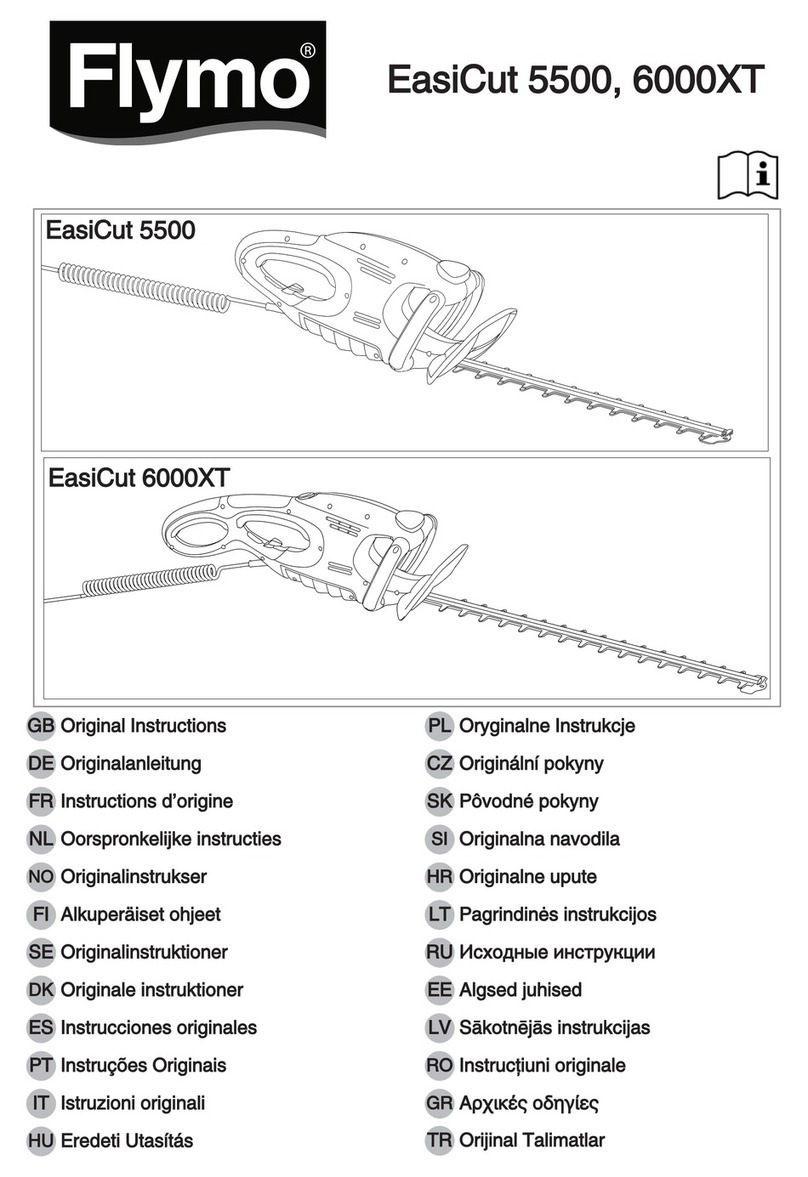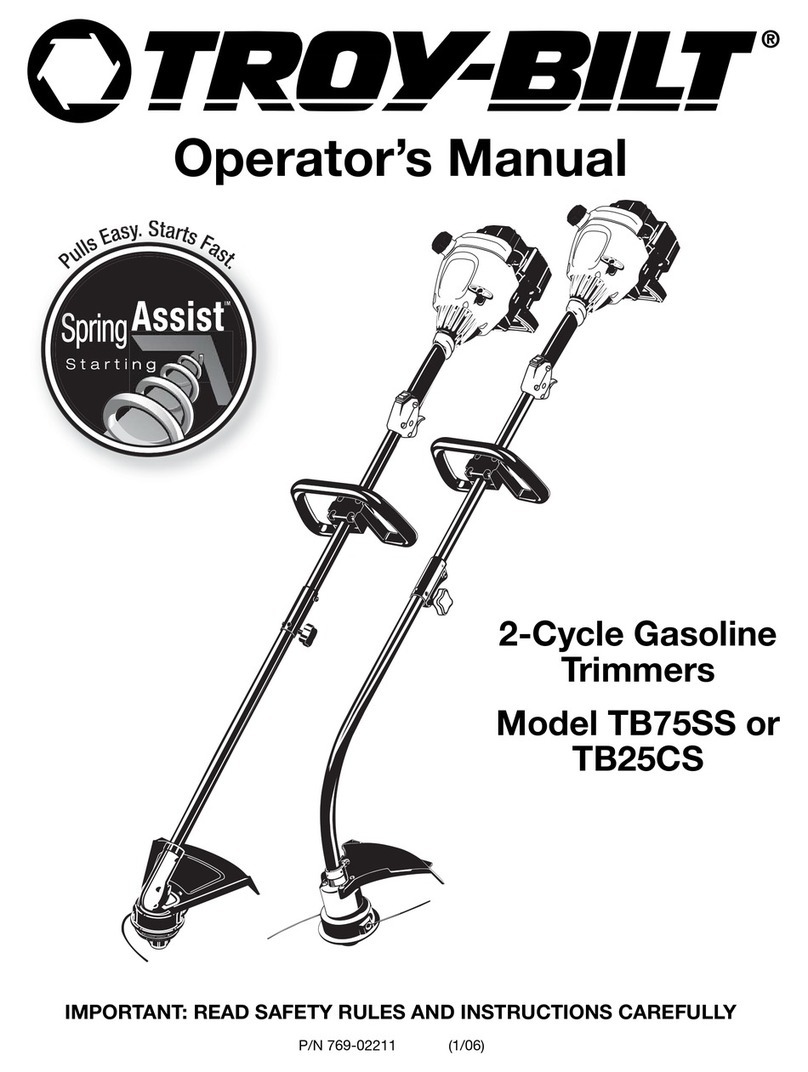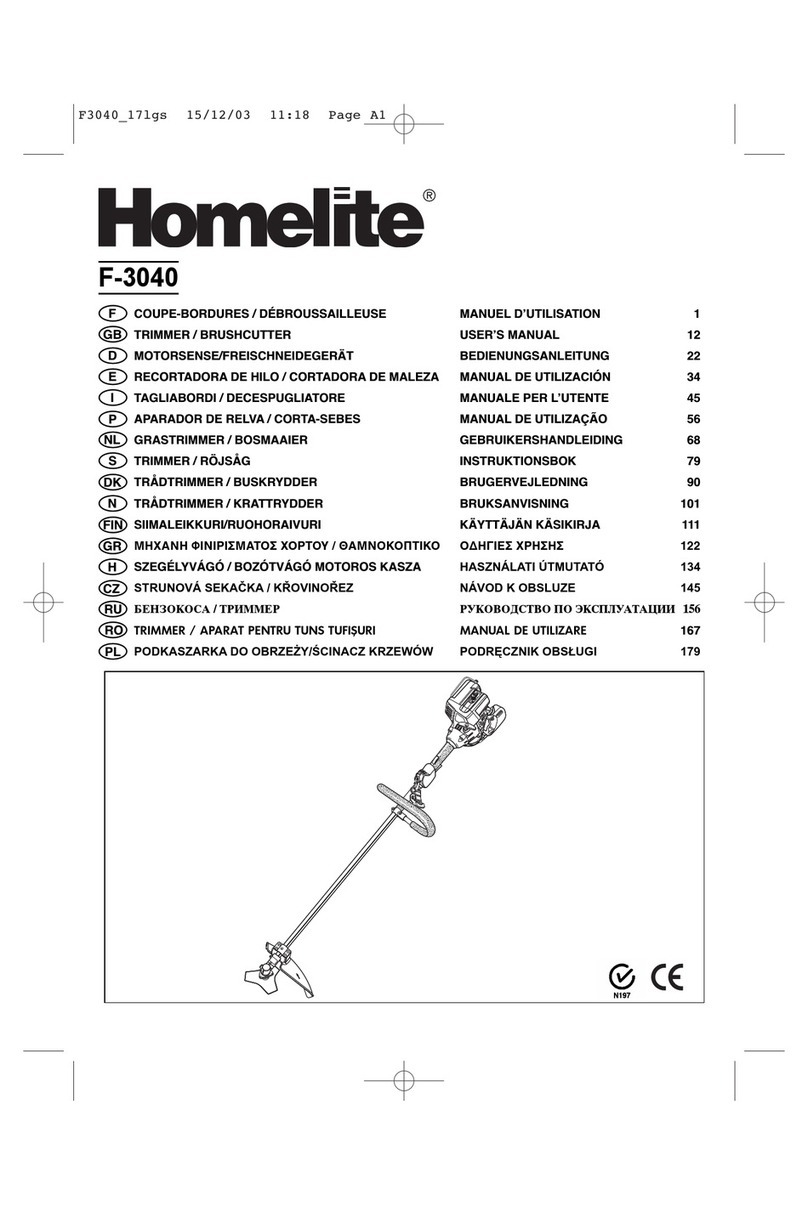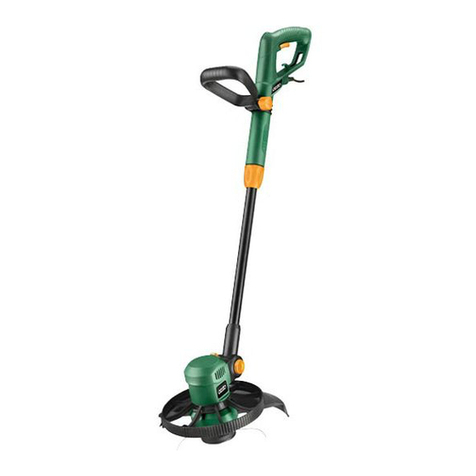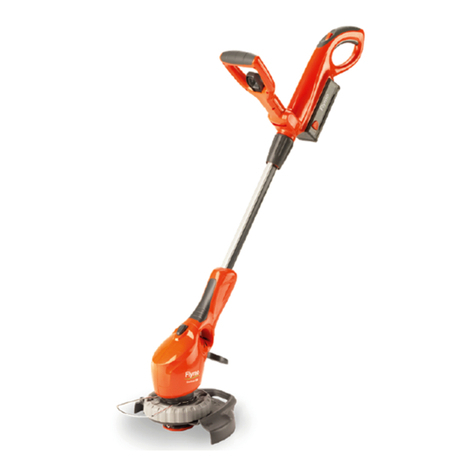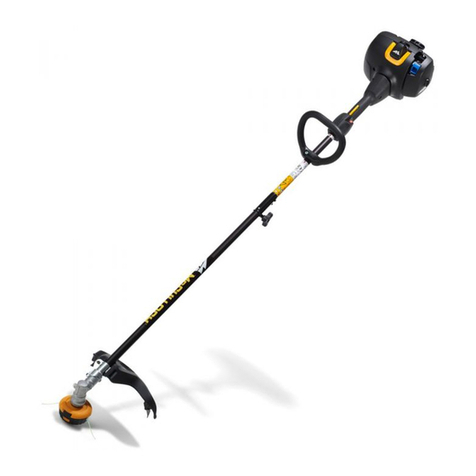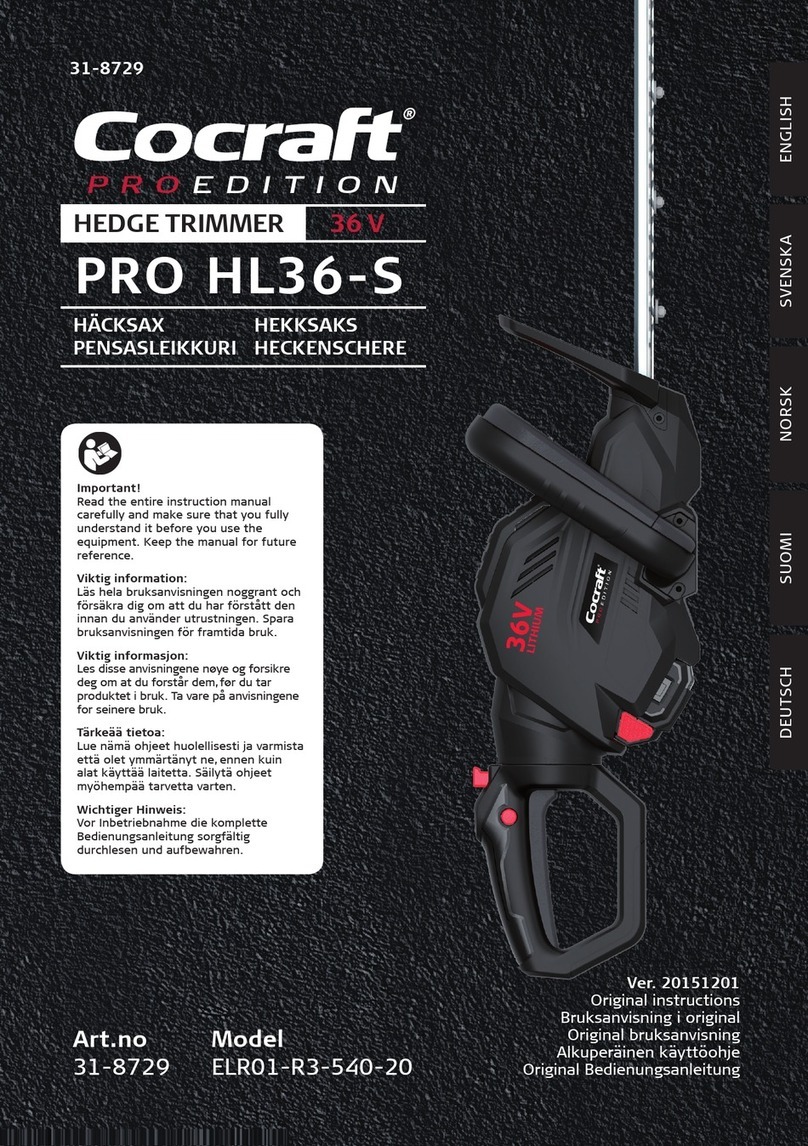
5
This will reduce the risk
of electric shock. Removing the battery pack will not reduce this risk.
not attempt to use it on any other voltage.
For safe operation, read this manual and manuals originally supplied with tool
before using the charger.
The battery pack can explode in a fire. Toxic fumes and materials are created when battery packs
are burned.
Inserting or removing the battery from the charger may ignite the dust or fumes.
If battery liquid gets into the eye, rinse water over the open eye for 15 minutes or
until irritation ceases. If medical attention is needed, the battery electrolyte for Li-ion batteries is
composed of a mixture of liquid organic carbonates and lithium salts.
Provide fresh air. If symptoms
persist, seek medical attention.
BURN HAZARD. BATTERY LIQUID MAY BE FLAMMABLE IF EXPOSED TO
SPARK OR FLAME.
Charge the battery packs only in Craftsman®chargers.
This may cause premature cell failure.
Never attempt to open the battery pack for any reason. If battery pack case is
cracked or damaged, do not insert into charger. Do not crush, drop or damage battery pack. Do not
use a battery pack or charger that has received a sharp blow, been dropped, run over or damaged in
any way (i.e., pierced with a nail, hit with a hammer, stepped on). Damaged battery packs should be
returned to service center for recycling.
For example, do not place battery in aprons, pockets, tool boxes,
product kit boxes, drawers, etc., with loose nails, screws, keys, etc.
The US Department of Transportation
Hazardous Material Regulations (HMR) actually prohibit transporting batteries in commerce or on
airplanes (i.e., packed in suitcases and carry-on luggage) UNLESS they are properly protected from
short circuits. So when transporting individual batteries, make sure that the battery terminals are
protected and well insulated from materials that could contact them and cause a short circuit. NOTE:
LI-ION batteries should not be put in checked baggage.




